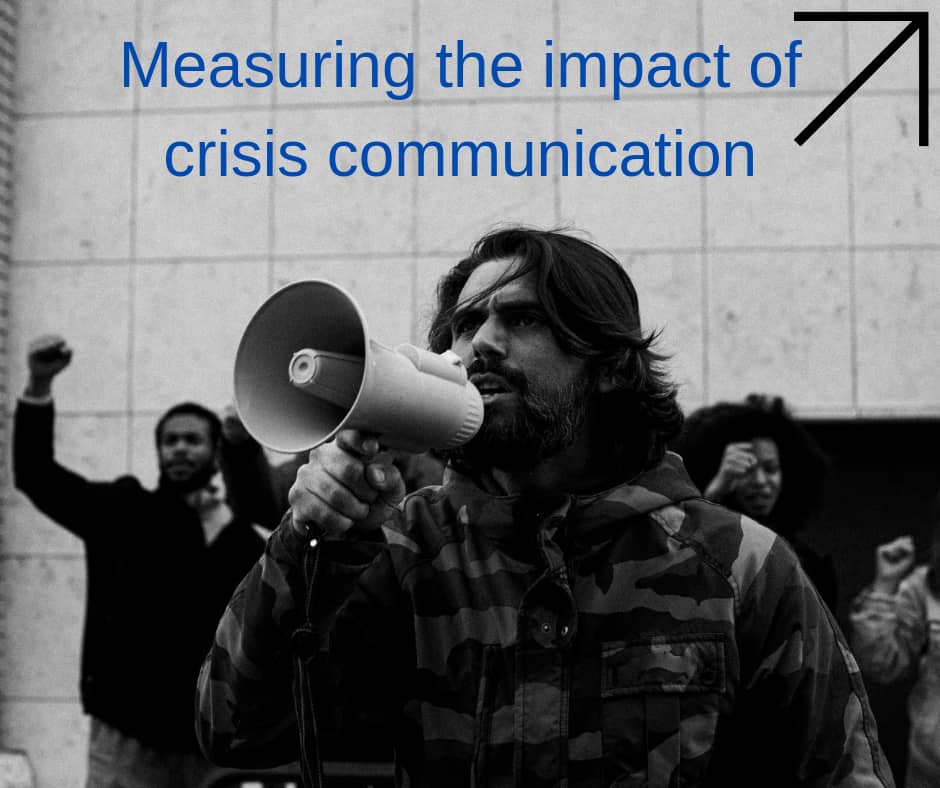Measuring the Impact of Crisis Communication Efforts

In the world of communications and public relations, measuring the impact of crisis communication efforts is crucial. Companies and organizations face a myriad of challenges when navigating through crises, including maintaining their reputation, ensuring transparency, and mitigating potential damage. However, measuring the impact of crisis communication efforts is often overlooked or not properly understood.
It is crucial to understand that the impact of crisis communication efforts goes beyond just the immediate resolution of a crisis. It extends to the long-term reputation and perception of the organization. A crisis communication plan is not just about reacting to a crisis but it is also about understanding how your response affects your audience, your brand, and your bottom line. This article is important to shed light on key strategies and metrics for evaluating the effectiveness of crisis communication efforts.

One key aspect to consider when measuring the impact of crisis communication efforts is the speed and accuracy of the response. During a crisis, the ability to respond quickly and effectively can significantly impact how the crisis is perceived by the public.
There is a need to define clear objectives for your crisis communication efforts. These objectives should be specific, measurable, achievable, relevant, and time-bound (SMART). By setting these objectives, the crisis communications team can easily determine what success looks like and tailor their measurement approach accordingly.
- Impact of a crisis on the brand reputation: A key metric to note is the impact of a crisis on the brand reputation. During a crisis, public perception of your brand can shift rapidly, and it’s important to monitor this closely. Tools like sentiment analysis can help you gauge how your audience is responding to your messaging and whether it’s helping to restore trust in your brand. In the instance where the negative comments persists and the brand has lost its stakeholders’ trust, this means the crisis communication effort was poor.
- Evaluate the reach and engagement of your messaging: Another important aspect of measuring the impact of crisis communication efforts is evaluating the reach and engagement of your messaging. This involves tracking metrics such as the number of people reached, the level of engagement (likes, comments, shares), and the overall sentiment of these interactions. By analyzing these metrics, you can assess the effectiveness of your messaging in reaching and resonating with your target audience. The overall sentiment will mean how well did the narrative around your brand change. If the public’s engagement on the matter shows that the sentiments did not change, then the crisis communication effort did was not convincing enough and lacked a show of care, control and commitment to serve the people better.
- Track the sentiments of the response to your communication: Furthermore, the tone and messaging of the communication efforts can also impact the effectiveness. Organizations should track the sentiment of the responses to their communication efforts to gauge whether they are being perceived positively or negatively. This can help identify areas for improvement and adjustment in future crisis communication strategies.
- Continuous Monitoring and Evaluation: In addition to these metrics, there is also a need for continuous monitoring and evaluation of your crisis communication efforts. This involves regularly reviewing your objectives, adjusting your strategies as needed, and staying agile in your approach. By doing so, you can ensure that your crisis communication efforts are effective and responsive to the evolving nature of a crisis. Read and learn this 5 crisis resilience lessons from Nigeria here.
The importance of monitoring the impact of crisis communication efforts on key stakeholders, such as customers, employees, and investors cannot be overemphasized. These groups can be significantly impacted by a crisis, and it’s important to track their perceptions and reactions to your communication efforts. This can help you tailor your messaging to address their specific concerns and needs.
It therefore becomes important that communications professionals are proactive to oil the reputation of brands they work for even after a major crisis. The reputation will be maintained based on the things that such a brand continues to do or refrains from doing. Measuring the crisis communications effort will also entail keeping track of issues and monitoring internally to ensure that they are resolved and prevented from becoming a crisis with a negative public attraction to the brand.
In conclusion, measuring the impact of crisis communication efforts is essential for understanding how your messaging is resonating with your audience and driving the desired outcomes. By defining clear objectives, monitoring key metrics, and staying agile in your approach, brands can ensure that your crisis communication efforts are effective and help to protect and enhance the brand reputation in times of crisis.
Every business leader should watch this to learn about the value of proactive issues and reputation management.
Enrol our upcoming CPD Standards Office-Accredited Course on Issues, Crisis and Reputation Management to learn how to de-escalate and sustainably manage complex issues and crisis!! Click here.
